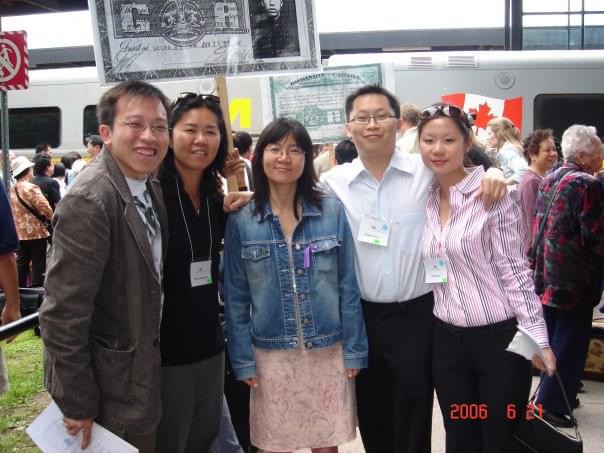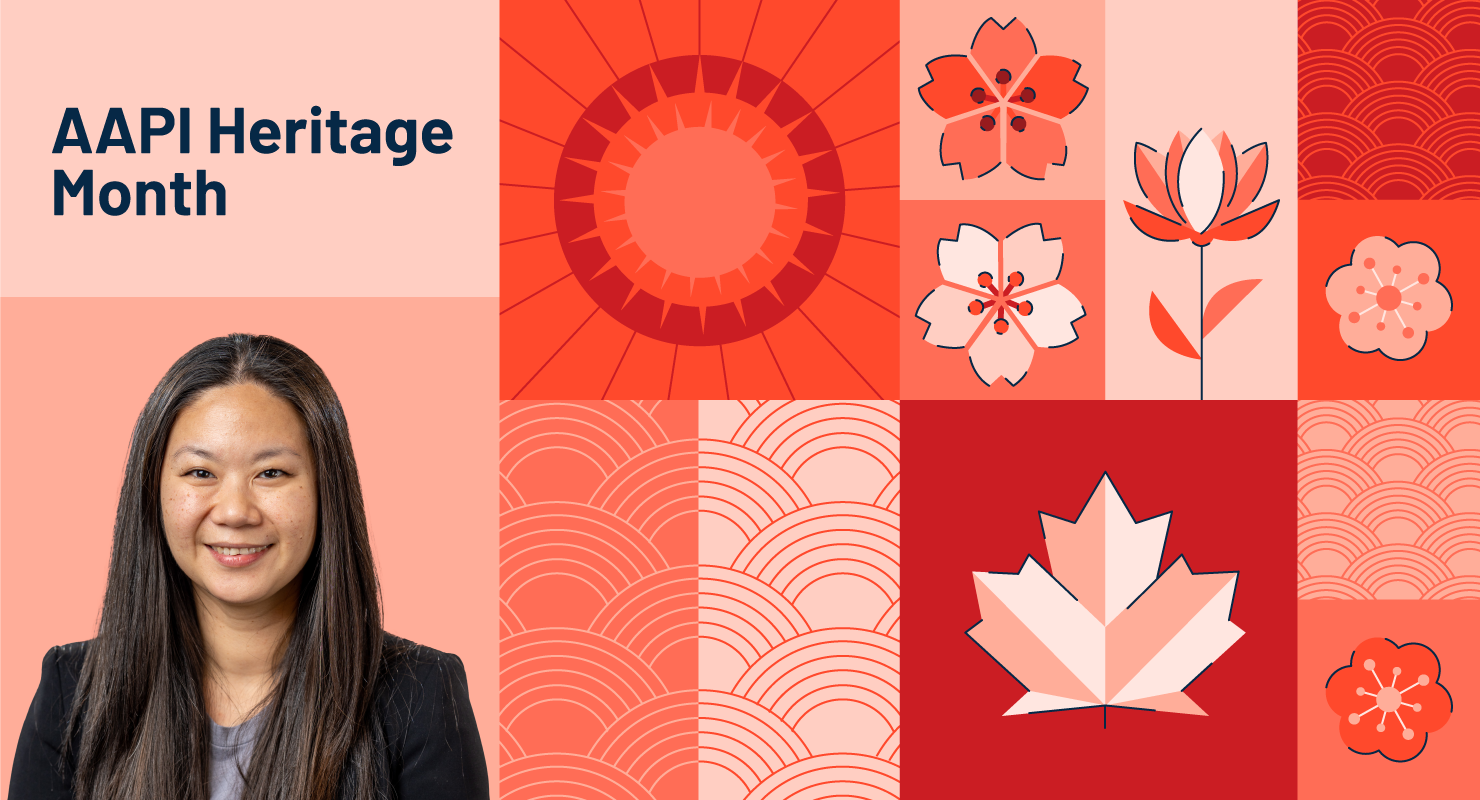This month, we are celebrating Asian American and Pacific Islander (AAPI) Heritage Month here at G2. AAPI Heritage Month was formally designated in the U.S. in 1990 and ever since, it has continued to grow in recognition across all industries and sectors every year.
But did you know that May is also Asian Heritage Month in my home country of Canada? Asian Heritage Month in Canada was formally recognized by the government in May 2002 “to reflect on and recognize the many contributions that people of Asian origin have made and continue to make to Canada.”
Like the U.S., Canada is also a nation of immigrants with rich and complex histories. Also like the U.S., some of those histories are complicated and painful, and the experiences of early Chinese Canadians are no exception.
Before my life in the corporate sector and the tech industry, I worked in a very different space—human rights and social justice. It was through this space and advocacy work that I eventually got involved in a campaign to address one of the most painful and difficult historical issues Chinese Canadians have ever experienced — the Chinese Head Tax.
History of the Chinese Head Tax in Canada
In many ways, the experiences of the first Chinese immigrants parallels those of the first Chinese immigrants in the U.S. In the late 1800s, there was an influx of Chinese immigration to the North American West Coast. Some went to California and many ended up in British Columbia to help build the Canadian Pacific Railway and work in logging operations.
Unfortunately, many white Canadians were hostile to Chinese immigration. In 1885, immediately after construction on the Canadian Pacific Railway was complete, the federal government passed the Chinese Immigration Act, which stipulated that, with almost no exceptions, every person of Chinese origin immigrating to Canada had to pay a fee of $50, called a head tax.
In 1900, the head tax was raised to $100. Then, three years later, it went up to $500 per person, equivalent to CAD 18,000 today. Between 1885 and 1923, approximately 81,000 Chinese immigrants paid the head tax, contributing millions of dollars to government coffers.
No other group in Canadian history has ever been forced to pay a tax based solely on their country of origin. It was an attempt to discriminate against the Chinese, deter more immigrants from Asia, and favor European and British migrants.
Because of the costly head tax, by 1923, Canada’s Chinese communities were largely bachelor societies, where men outnumbered women by a ratio of almost twenty‐eight to one. Many Chinese men had come to Canada alone, hoping to save enough money to bring over their wives and families. Then, to make matters even worse, the Chinese Exclusion Act of 1923 was passed effectively putting a halt to any immigration and preventing travel in and out of the country.
The Redress Movement
Until Canada’s immigration system was overhauled in 1967, the Chinese Canadian community suffered greatly and the effects of racial discrimination took a psychological toll on many generations. In 1983, the first formal requests were made by Chinese Canadians to refund the head taxes that had been paid. In the years that followed, thousands of Chinese Canadians came forward seeking redress and movement was slowly building. As a Chinese Canadian, this was an issue that resonated deeply with me and I needed and wanted to find a way to remedy it.
Growing up in Canada, I was ignorant of the Chinese Head Tax or the history of Chinese railway workers until my second year of university as a pre-law student. After that, I became engrossed in researching this topic. I felt disappointed that this dark chapter of Canadian history was not included in the history books we read in public school.
It was during this time that I also became aware of my own family’s journey as first-generation immigrants and the parallels between the hardships they endured and those discriminatory practices that plagued Canada’s past. I realized that not only do I have a voice as a Canadian citizen, but that it was my responsibility to speak up because there are others, like my parents, who are afraid to voice their critiques.
Joining The Movement
During my research, I came across a non-governmental organization that stood at the forefront of the movement, the Chinese Canadian National Council (CCNC). What started as a research interview quickly became a volunteer opportunity to join their board as a National Executive and a seat on their Advocacy Steering Committee.
For the next two years, I served alongside Canada’s most respected community leaders, human rights lawyers, and journalists to raise awareness of this decades-old injustice. I spoke at Parliamentary Standing Committee Hearings, media interviews, and multiple community events where I overcame my stage fright and learned to articulate my viewpoints. Our movement came to a tipping point on November 28, 2005, when the Canadian Liberal minority government was defeated on a motion of non-confidence, one of the reasons being the redressing of the Chinese Canadian Head Tax.
Over the next three months leading up to the general election, we worked tirelessly to raise awareness of the Chinese Head Tax, mobilize grassroots support, and lobby political candidates to redress this past wrong. Canada has a multi-party political system, we already had the support of the New Democratic Party and Bloc Quebecois. On December 8, 2005, we received formal support from Stephen Harper who eventually became Prime Minister in 2006.
On March 24, 2006, our hard work and dedication finally paid off when the government of Canada issued an all-parliamentary apology to the Chinese-Canadian community and the descendants of those who were subjected to the Chinese Head Tax. The Prime Minister acknowledged that the tax was discriminatory. The federal government also promised to pay $12.5 million to create a new foundation designed to educate Canadians about the wrongs suffered by Chinese Canadians and other ethnocultural groups. The Chinese Head Tax is one of two successful redresses made in the history of Canada - the other is for the Internment of Japanese Canadians during WWII.
I breathe a little easier knowing that the Head Tax survivors and families have finally found justice, that as a country we took responsibility for our past mistakes so that we don’t repeat them in the future, and this stain in our history is now been brought to light in every public education curriculum across the nation.

[Photo: “The Redress Express”, June 21, 2006. L-R: Simon Lee (Journalist), Kristyn Wong-Tam (Ontario Member of Parliament), Avvy Go (Judge), Apollo Chung, Christine Li]
Entrepreneurship For Good
The Chinese Head Tax Redress Movement taught me an invaluable lesson: to be bold, participate, and speak up. We each have a voice and progress won’t happen if we sit on the sidelines waiting for someone else to speak for us.
This experience also changed my career direction from an idealistic pre-law student who dreamt of a public policy career to finding my calling in communications and changing peoples’ perceptions through education and awareness. Nearly two decades later I still feel immense gratitude for this movement, the experience I received, and the people I had met along the way.
Here at G2 one of our PEAK values is entrepreneurship. It’s about encouraging each other to be curious and share ideas on how we can get better every day. It’s about questioning the status quo and proactively seeking out change and improvement, rather than being complacent. It’s one of the reasons why I joined G2 and love being part of the G2 global work community.
While many view entrepreneurship through a profit and economic lens, I believe that entrepreneurship, resilience, and determination can be applied to help solve larger societal problems and find solutions that not only generate positive social impact but also address historical wrongs so that we all can move forward together.

 by Jacqueline Cambron
by Jacqueline Cambron
 by Ann Nguyen
by Ann Nguyen